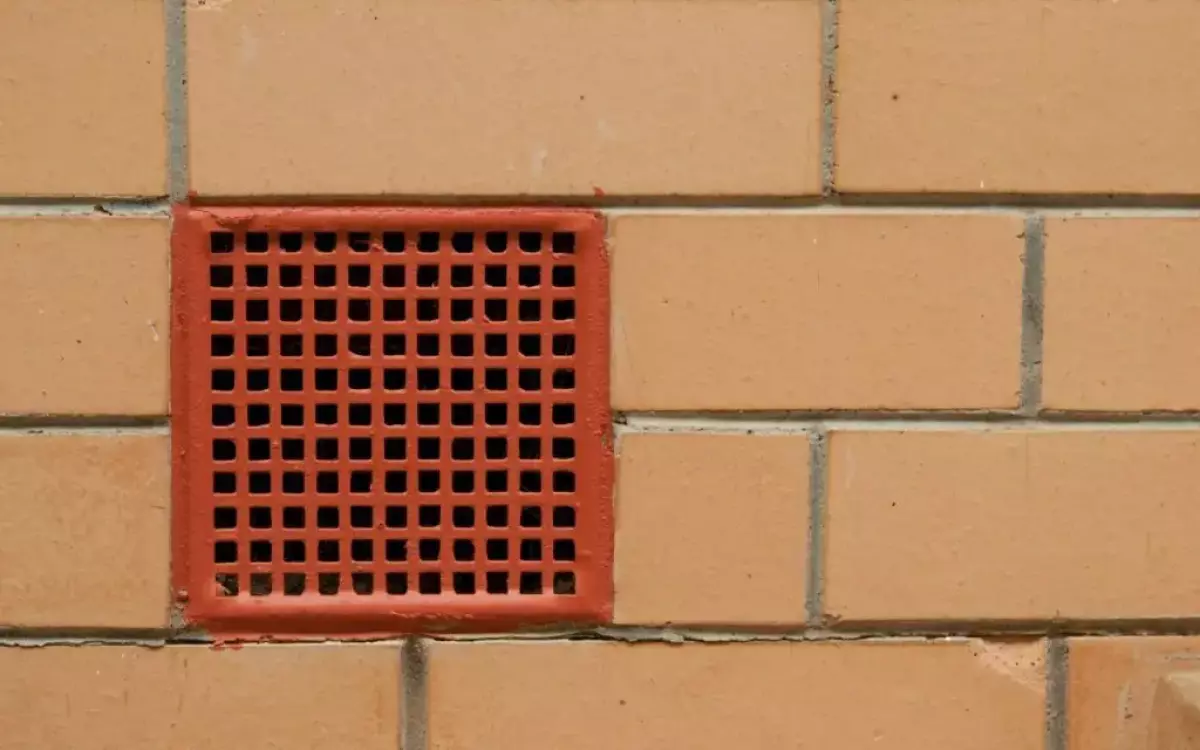Introduction: Having proper ventilation in your garage is essential to maintain a safe and healthy environment, while also preventing the buildup of harmful gases. In this article, we will explore five different garage ventilation options, both active and passive methods, to help you choose the best solution for your needs.
Wall vents
Wall vents are a popular choice for garage ventilation as they allow for the exchange of air between the interior and exterior spaces. By installing intake and exhaust vents, you can maximize airflow and ensure proper ventilation. The installation of wall vents may require cutting through the wall insulation, but the benefits outweigh the effort.
 Caption: A wall vent of a garage
Caption: A wall vent of a garage
Garage door vents
If you prefer an easier installation process, garage door vents are a passive ventilation method worth considering. By installing vents on the top and bottom sides of your garage door, you can create a flow of air that allows hot air to escape and cooler air to enter. However, it's important to note that this method may not be suitable for larger garage spaces.
Exhaust fans
For more effective ventilation, exhaust fans are a powerful option. There are two types of exhaust fans commonly used for garages: wall-mounted fans and roof-mounted fans. These active ventilation systems forcefully remove air from the garage, ensuring proper airflow.
Wall-mounted exhaust fans
Wall-mounted exhaust fans are installed on outside-facing walls and require a hole to be drilled for the exhaust ducting. These fans are a great choice for garages without open rafter ceilings.
Roof-mounted exhaust fans
If your garage has an open rafter ceiling or if you prefer a roof-mounted option, attic fans are a suitable choice. These fans can also be installed on the gable or even on the ceiling for garages with a closed ceiling. However, it's important to ensure sufficient intake ventilation for these fans to work effectively.
Air conditioning
While not recommended for garages that are used solely for car storage, conditioning your garage may be necessary if it's used as a workshop or a popular hangout spot. Using a split air conditioner allows you to condition the space without affecting the main HVAC system of your home.
 Caption: A split air conditioner in a garage
Caption: A split air conditioner in a garage
Windows
Having windows in your garage is an effective way to ensure proper air circulation. By keeping windows open, you can promote cross ventilation and cool down the space. However, it's important to consider the size and placement of windows to avoid obstructing airflow. Additionally, if your garage is attached to your house, installing a vent on the garage door can provide continuous ventilation.
Is garage ventilation necessary?
While it's not mandatory according to building codes, ventilating your garage offers several benefits. It helps maintain a bearable temperature, prevents the buildup of harmful fumes, and ensures a safe environment. Ventilation is especially important if you spend a lot of time in your garage or store vehicles there.
Active or passive ventilation: Which is better?
Passive ventilation methods are generally recommended for garages, as they require less supervision and do not rely on energy consumption. However, if you use your garage frequently and want to keep it comfortable, active ventilation methods like exhaust fans can be beneficial.
By understanding these garage ventilation options, you can choose the method that suits your needs best. Whether you opt for passive methods like wall vents or garage door vents or prefer the power of exhaust fans or air conditioning, proper ventilation will help ensure a safe and enjoyable experience in your garage.









